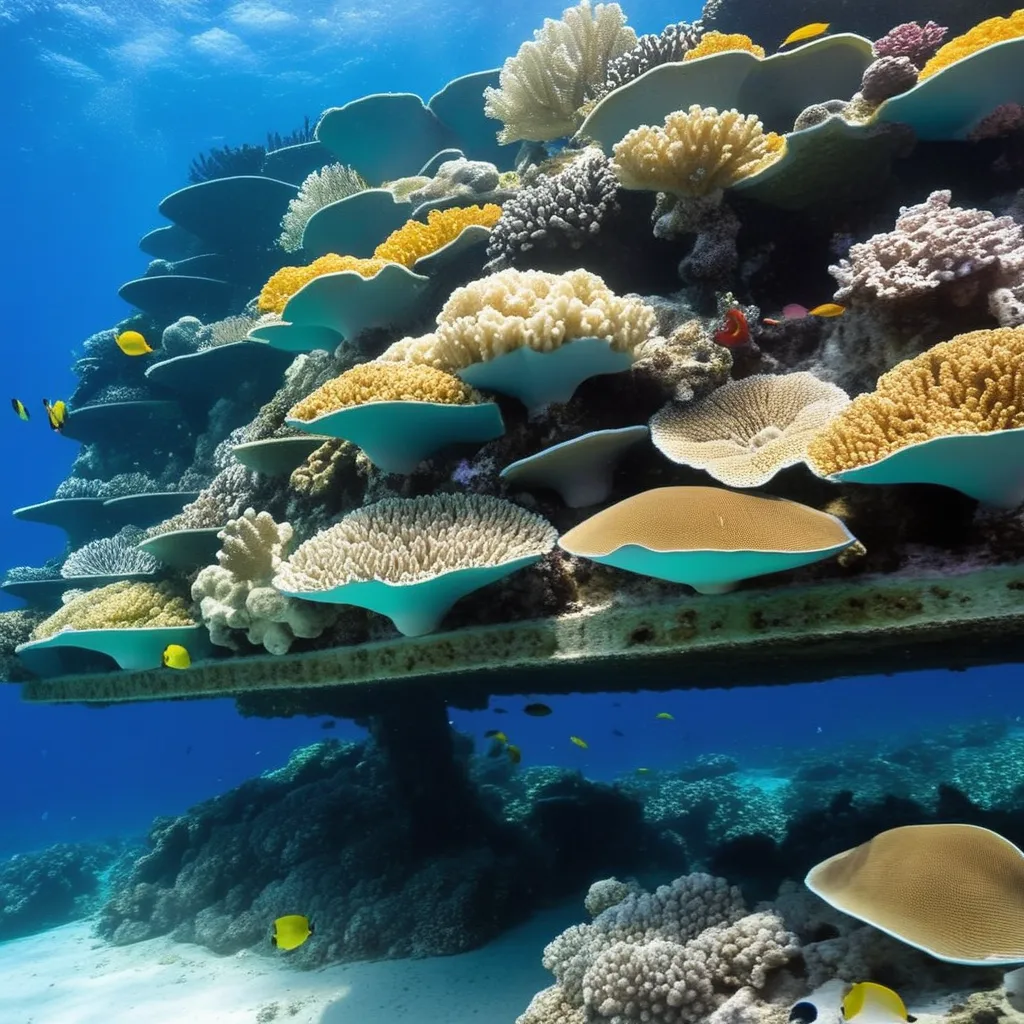Artificial Coral Reefs: Aiding Ocean Life
Hey ocean enthusiasts and eco-warriors! Let's dive into the fascinating world of artificial coral reefs and explore how these human-made structures are playing a crucial role in supporting and rejuvenating marine life. As someone who has marveled at the beauty of coral ecosystems and witnessed the challenges they face, the innovative solutions of artificial coral reefs have become a beacon of hope. Join me on this journey as we unravel the significance, benefits, and personal experiences tied to these underwater sanctuaries.

Coral Reefs in Crisis: Understanding the Challenge
Coral reefs, often referred to as the rainforests of the sea, are facing unprecedented challenges. From rising sea temperatures to pollution, these delicate ecosystems are under threat. Witnessing the bleaching of once-vibrant coral reefs served as a stark reminder of the urgent need for conservation efforts.
Dying Reefs
Snorkeling in areas that were once vibrant coral havens revealed a sobering sight. Bleached and lifeless coral formations highlighted the devastating impact of climate change on these ecosystems. It was a call to action, prompting a search for innovative solutions.
Artificial Coral Reefs: A Creative Intervention
Enter artificial coral reefs – a creative and promising intervention aimed at restoring and preserving marine habitats. These structures mimic the complexity of natural coral formations and provide a substrate for marine life to thrive.
Sunken Sculptures
Exploring an area with sunken sculptures serving as artificial reefs was a surreal experience. The sculptures, adorned with colorful corals and teeming with fish, showcased the transformative power of human ingenuity. It was a testament to the potential of artificial reefs to breathe life into barren underwater landscapes.
Biodiversity Boost: A Haven for Marine Life
Artificial coral reefs act as magnets for marine biodiversity. The complex structures offer shelter, breeding grounds, and feeding areas for a diverse array of oceanic species.
Fishy Neighborhoods
Diving into the heart of an artificial reef felt like entering a bustling underwater neighborhood. Schools of fish, crustaceans seeking refuge, and vibrant corals painted a picture of newfound vitality. The richness of biodiversity within these artificial havens mirrored the intricate ecosystems of natural coral reefs.
Coral Restoration: giving Nature a Helping Hand
Beyond providing a habitat for existing marine life, artificial coral reefs also serve as platforms for coral restoration initiatives. Coral fragments are attached to these structures, allowing them to grow and multiply.
Coral Gardening
Participating in a coral gardening initiative highlighted the meticulous process of attaching coral fragments to artificial structures. It was a hands-on experience that showcased the potential for community-led efforts to contribute to coral restoration. The hope is that these efforts will result in thriving coral colonies over time.
Tourism with a Purpose: Sustainable Diving
Artificial coral reefs are not only a boon for marine life but also for sustainable tourism. Diving and snorkeling around these structures offer enthusiasts an opportunity to witness the marvels of the underwater world while minimizing impact on natural coral reefs.
Eco-Friendly Tourism
Engaging in eco-friendly diving experiences around artificial reefs was an eye-opener. It emphasized the importance of responsible tourism practices that contribute to conservation rather than exploitation. Sustainable tourism initiatives centered around artificial reefs can create a win-win scenario for both nature and enthusiasts.
Challenges and Continued Innovation
While artificial coral reefs present a promising solution, they are not without challenges. Maintenance, potential for invasive species, and the need for ongoing research to optimize their design are aspects that require attention. However, ongoing innovations in materials and design suggest that these challenges are not insurmountable.
Innovation in Action
Witnessing ongoing experiments with innovative materials for artificial reefs was inspiring. From eco-friendly concrete blends to structures designed to facilitate natural coral growth, the commitment to refining and optimizing these structures was evident. It showcased the dynamic nature of conservation efforts.
Conclusion: Nurturing Ocean Resilience
In conclusion, artificial coral reefs stand as a beacon of hope in the face of coral reef degradation. These human-made structures not only provide a lifeline for marine life but also offer a tangible way for individuals and communities to contribute to ocean conservation. Through personal experiences and community-led initiatives, the potential for artificial coral reefs to aid ocean life becomes clear. As we continue to navigate the challenges of preserving our oceans, these innovative interventions remind us that even in the depths of the sea, human creativity can nurture resilience and bring about positive change.

No comments:
Post a Comment